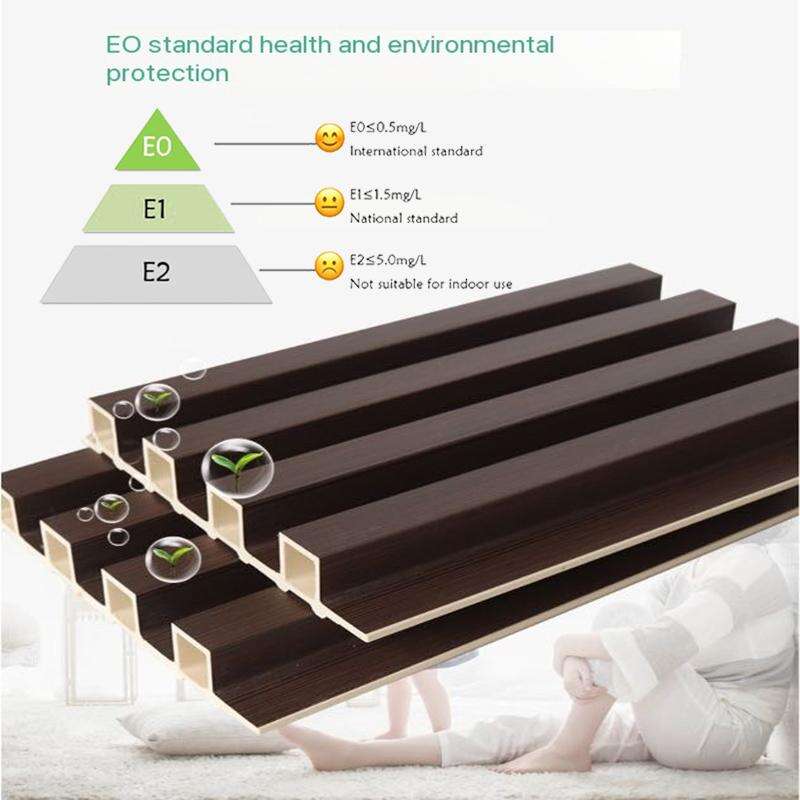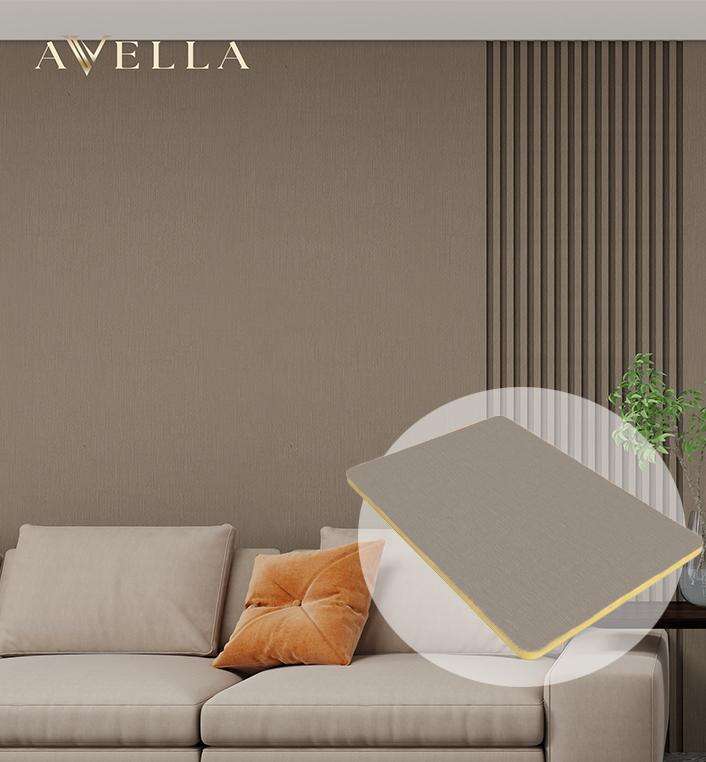Mengevaluasi WPC: Apakah Ini Material yang Tepat untuk Penggunaan di Luar Ruangan?
Meningkatnya Popularitas WPC dalam Konstruksi Modern
Komposit Kayu Plastik, atau disingkat WPC, akhir-akhir ini semakin populer sebagai pilihan dalam membangun area luar ruangan dibandingkan kayu biasa atau PVC. Yang membuat WPC istimewa adalah cara kerja campuran antara serpihan kayu dengan bahan plastik, menghasilkan material yang tampil menarik sekaligus lebih tahan terhadap kondisi cuaca dibanding banyak alternatif lainnya. Pemilik rumah menyukai tampilan seperti kayu tanpa repotnya perawatan yang rumit, sedangkan kontraktor menghargai berkurangnya kebutuhan untuk mengecat atau melapisi permukaan dari waktu ke waktu. Namun tetap saja, tidak ada material yang sempurna untuk semua kebutuhan. Kelebihan dan kekurangannya berbeda tergantung pada apa yang sebenarnya ingin dibangun. Beberapa orang justru kembali menggunakan bahan lain setelah mengalami masalah tertentu di kemudian hari. Memahami kedua sisi dari produk ini akan membantu menentukan apakah material ini cocok dengan tujuan seseorang dalam membangun area luar rumahnya rumah .
Keunggulan WPC untuk Penggunaan di Luar Ruangan
Ketahanan Jangka Panjang dan Stabilitas Struktural
Yang benar-benar membedakan WPC dari pesaingnya adalah ketahanannya terhadap alam. Kayu alami sering mengalami pelengkungan, retak, dan pecah setelah bertahun-tahun terpapar hujan deras, salju, dan sinar matahari yang terus-menerus. Namun WPC memiliki kisah yang berbeda. Material komposit ini tetap mempertahankan bentuknya dan tidak kehilangan kekuatannya, terlepas dari kondisi cuaca yang menimpanya. Karena itulah banyak pemilik rumah memilih WPC untuk lantai teras, pagar di sekeliling properti, pelapis dinding eksterior, bahkan pegangan tangga. Material ini terus bertahan tahun demi tahun tanpa memerlukan perbaikan atau penggantian secara terus-menerus.
Persyaratan Pemeliharaan yang Rendah
Lantai kayu tradisional atau pagar luar ruangan biasanya memerlukan penyegelan, pemberian stain, atau pengecatan secara berkala. WPC, di sisi lain, membutuhkan perawatan minimal—pembersihan berkala dengan sabun dan air biasanya sudah cukup untuk menjaga tampilannya. Material ini tahan terhadap pembusukan, jamur, dan kerusakan akibat serangga tanpa memerlukan perlakuan khusus dengan bahan kimia.
Komposisi Ramah Lingkungan
WPC sering dibuat menggunakan plastik daur ulang dan serat kayu yang direklaim, yang berkontribusi pada konservasi lingkungan. Hal ini membuatnya menjadi pilihan menarik bagi konsumen dan bisnis yang peduli terhadap lingkungan. Selain itu, siklus hidup WPC yang panjang berarti mengurangi limbah seiring waktu dibandingkan dengan bahan yang lebih cepat terdegradasi.
Kenyamanan dan Keamanan yang Ditingkatkan
Permukaan WPC dirancang untuk bebas serpihan dan tahan selip, sehingga meningkatkan keamanan untuk kaki telanjang dan anak-anak. Selain itu, suhu permukaannya juga lebih moderat di bawah sinar matahari dibandingkan logam atau kayu berwarna gelap, sehingga lebih nyaman untuk diinjak saat cuaca panas.
Fleksibilitas desain
WPC tersedia dalam berbagai macam warna, pola serat, dan tekstur. WPC dapat dibuat menyerupai tampilan berbagai jenis kayu atau memberikan kesan modern yang ramping. Dengan profil dan akhiran yang dapat disesuaikan, WPC mudah menyesuaikan diri dengan berbagai gaya estetika, dari teras bergaya pedesaan hingga dek perkotaan kontemporer.
Batasan WPC dalam Penggunaan di Luar Ruangan
Biaya Awal Lebih Tinggi
Meskipun WPC memiliki biaya yang lebih ekonomis dalam jangka panjang karena kebutuhan pemeliharaan yang lebih rendah, biaya awal WPC umumnya lebih tinggi dibandingkan kayu yang tidak diperlakukan atau PVC. Hal ini bisa menjadi hambatan bagi proyek-proyek yang mempertimbangkan anggaran secara ketat, terutama pemasangan berskala besar.
Kapasitas Menahan Beban Terbatas
WPC tidak memiliki kekuatan struktural sekuat kayu padat atau logam. WPC bisa melengkung atau mengendur di bawah beban berlebih jika tidak didukung dengan baik. Untuk aplikasi yang membutuhkan integritas struktural tinggi—seperti jembatan berbentang panjang atau sistem pagar berat—WPC mungkin membutuhkan penguatan atau mungkin tidak cocok.
Pudarnya Warna Seiring Waktu
Walaupun lebih tahan terhadap sinar UV dibandingkan kayu, WPC tetap bisa mengalami sedikit pemudaran warna setelah terpapar sinar matahari dalam jangka waktu lama. Produsen dapat mengaplikasikan lapisan atau aditif untuk mengurangi efek ini, tetapi pengguna perlu menyadari bahwa perubahan warna seiring bertambahnya usia adalah hal yang alami.
Penyimpanan Panas di Bawah Paparan Langsung Matahari
Meskipun tidak sepanas logam, WPC dapat mempertahankan panas di bawah sinar matahari langsung. Di iklim yang sangat panas, lantai decking WPC mungkin menjadi terlalu hangat untuk berjalan tanpa alas kaki kecuali jika dipilih warna yang lebih terang atau lapisan yang mampu meredam panas.
Keterbatasan Daur Ulang pada Akhir Masa Pakai
Sementara WPC dibuat dari bahan daur ulang, tidak selalu mudah untuk didaur ulang kembali setelah digunakan karena ikatan antara serat kayu dan plastik. Fasilitas daur ulang khusus diperlukan untuk memproses WPC pasca-konsumen, sehingga membatasi opsi pembuangan di beberapa wilayah.

Skenario Penggunaan Terbaik untuk WPC
Aplikasi Ideal
WPC unggul dalam aplikasi yang mengutamakan daya tahan, estetika, dan perawatan minimal. Termasuk di antaranya:
Deck taman dan halaman belakang
Pagar dan gerbang luar ruangan
Lapisan dinding untuk fasad
Jalan setapak di sekitar kolam renang
Terass atap
Lingkungan tersebut mendapat manfaat dari kemampuan WPC yang tahan terhadap kondisi luar ruang tanpa kehilangan daya tarik visual atau membutuhkan perawatan rutin.
Situasi Dimana Kewaspadaan Diperlukan
Pada aplikasi yang melibatkan beban struktural tinggi atau paparan panas ekstrem, diperlukan perencanaan yang cermat. Penguatan, desain sub-struktur yang tepat, atau memilih material alternatif mungkin diperlukan untuk memastikan keselamatan dan kinerja.
Perbandingan Dengan Bahan Tradisional
WPC vs. Kayu Alami
Kayu alami menawarkan autentisitas yang tidak tertandingi serta kesan hangat dan organik. Namun, kayu membutuhkan perawatan rutin dan rentan terhadap pembusukan serta kerusakan akibat serangga. WPC memberikan estetika serupa dengan perawatan jauh lebih sedikit, tetapi tidak memiliki autentisitas tekstur kayu asli.
WPC vs. PVC
PVC sepenuhnya sintetis, ringan, dan tahan terhadap kelembapan, tetapi seringkali kurang menarik secara estetis dibandingkan WPC. PVC juga menjadi rapuh di cuaca dingin dan dapat menghasilkan lebih banyak emisi VOC selama proses produksinya. WPC menjadi alternatif yang lebih seimbang secara lingkungan dan lebih menarik secara visual.
Alternatif Lantai Komposit WPC vs.
Tidak semua lantai komposit dibuat sama. Beberapa komposit kelas atas mungkin memiliki kinerja lebih baik dari WPC dalam hal kekuatan atau ketahanan cuaca, tetapi seringkali harganya lebih mahal. WPC menawarkan keseimbangan yang baik untuk sebagian besar kebutuhan rumah tangga dan komersial ringan.
Membuat Pilihan yang Tepat
Faktor yang perlu dipertimbangkan
Sebelum memilih WPC untuk proyek luar ruangan, pertimbangkan hal-hal berikut:
Kondisi Iklim : Apakah lokasi terpapar sinar matahari intens, kelembapan, atau suhu beku?
Anggaran Proyek : Apakah investasi awal dalam WPC dapat dikompensasi melalui penghematan jangka panjang?
Tujuan Estetika : Apakah WPC sesuai dengan gaya visual yang Anda tuju?
Kebutuhan Struktural : Apakah material ini perlu menahan beban atau benturan yang signifikan?
Reputasi Pemasok dan Jaminan Kualitas
Tidak semua produk WPC diproduksi dengan standar yang sama. Memilih pemasok terpercaya yang menyediakan sertifikasi kinerja, garansi, dan kontrol kualitas yang konsisten sangat penting untuk mendapatkan manfaat maksimal dari material tersebut.
FAQ
Berapa lama WPC bertahan dalam aplikasi luar ruangan?
Sebagian besar produk WPC memiliki masa pakai 15–25 tahun, tergantung pada iklim dan kualitasnya. WPC kelas premium dapat bertahan lebih lama lagi dengan perawatan minimal.
Apakah WPC aman digunakan di sekitar kolam renang?
Ya, WPC tahan air dan anti selip, sehingga cocok untuk lingkungan basah seperti dek kolam renang. Pastikan produk tersebut dirancang untuk penggunaan luar ruangan dan di area perairan.
Bisakah WPC dicat atau diberi stain?
Secara umum, WPC tidak dirancang untuk dicat atau diberi stain. Warna WPC sudah terintegrasi dalam material saat proses produksi. Namun, beberapa produk mungkin dapat menerima pelapisan khusus jika tekstur permukaannya memungkinkan.
Apakah WPC mengalami ekspansi dan kontraksi akibat perubahan suhu?
Ya, seperti kebanyakan bahan komposit, WPC mengembang ketika panas dan menyusut ketika dingin. Teknik pemasangan yang tepat—seperti memberikan celah ekspansi—sangat penting untuk menghindari pelengkungan atau deformasi.

